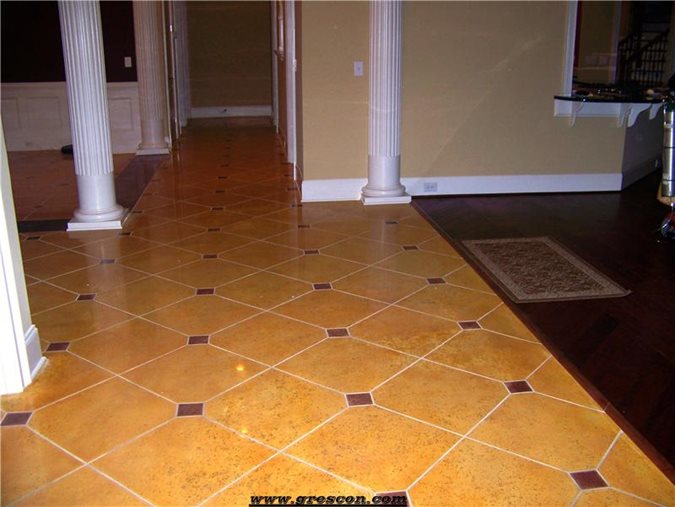- Concrete Overlays Home
- Get the Look - Interior Overlay Pictures
- When to Use a Polymer Overlay
- Comparison Chart of Overlay Systems: Which is best for your project?
- Five Factors to Consider when Choosing a Resurfacing System
- Concrete Overlay Reviews
- Types of Overlays
- Epoxy Coatings
- Microtoppings & Skim Coats
- Self-Leveling Overlays
- Spray-Down Toppings
- Polishable Overlays
- Stamped Concrete Overlays
- Preparing Concrete for Resurfacing
- Concrete Resurfacing
- Reducing Bond Failures Caused by Moisture-Vapor Transmission
- Don't Let Water Vapor Delaminate Your Overlay: How to seal concrete before an overlay
- How-To Tips for Installing Concrete Overlays
- Answers to Common Questions About Concrete Overlays: Advice from expert Chris Sullivan
- How to Add Color to Concrete Overlays
- How to Protect and Maintain Resurfaced Concrete
- Overlay Tools: Seven essential tools for concrete resurfacing
- Related Information
- Concrete Overlay Videos, with Bob Harris
- Decorative Concrete Overlays: A primer of the various overlay types and the decorative possibilities with each
- Vertical Concrete Overlays: Lightweight cement-based overlays mimic stone, brick, and other wall textures
Get the Look - Interior Overlays Pictures

This residential floor was overlayed with Scofield Texture Top, then seeded with glass aggregate, and saw cut into 18" tiles. It was then colored with Ameripolish dyes. The floor was polished starting with 100 metal bond then 100 resin bond, densified with Scofield Formula One Lithium Silicate, then polished to 3000 grit. Finish Coat sealer was applied, then the floor was burnished to 97 degrees.
Find a Local
Concrete Contractor See contractor photos & info in your area Search by city/state or postal code
Concrete Contractor See contractor photos & info in your area Search by city/state or postal code
Free Newsletter
Sign up for monthly newsletters
Shop Products
Find manufacturers & stores
Free Magazine
Get our annual concrete magazine




